Electronic medical records
It is a clinical information system which collects, stores and makes available all the health information of a patient for quality health care delivery. They may cover one line like laboratory data or may go all the way to cover all information concerning a particular patient (Carter,2001 p.2).

Importance of health information
- retrieval of information on taking patients’ medical history is fast as comparison is available and readily available.
- nurses are able to remind their patients on appointments and routine follow ups.
- Patients will be able to have their prescriptions refilled as they are reminded to take their dosage as required.
- There is better understanding and patient/nurse relationship is enhanced.
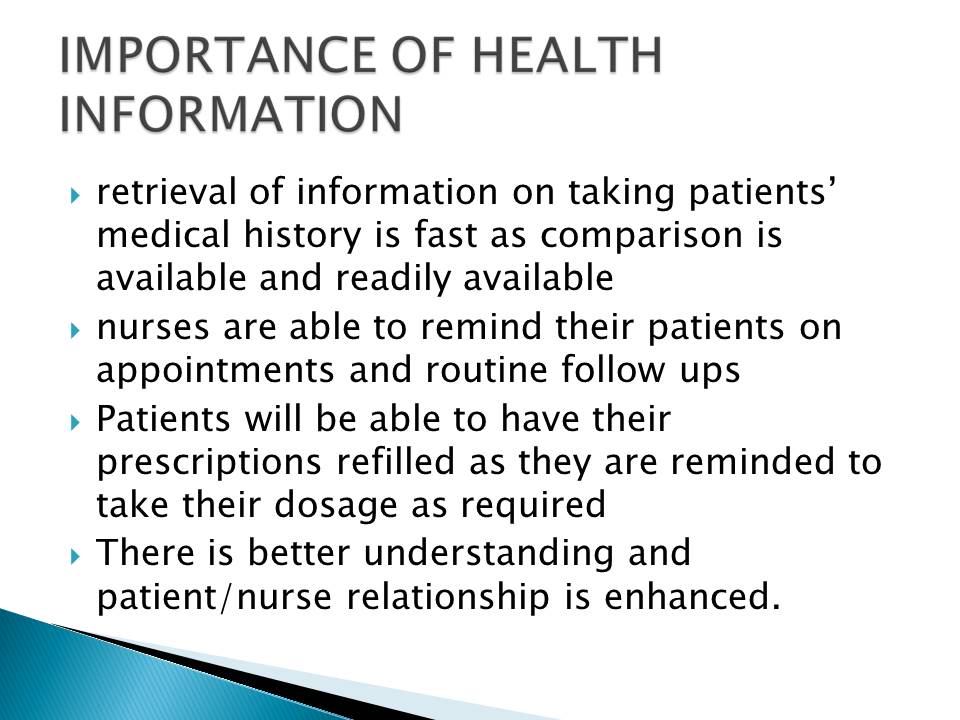
Vulnerability of PHI to breach in confidentiality
Personal information may be used in administration and processing of payment with insurance.
May be used for health care operations like measurement of performance or investigation of fraud.
Information may be disclosed to health care givers for purposes of treatment.
Information used for data collection purposes. When carrying out research some information are given out to interested parties.
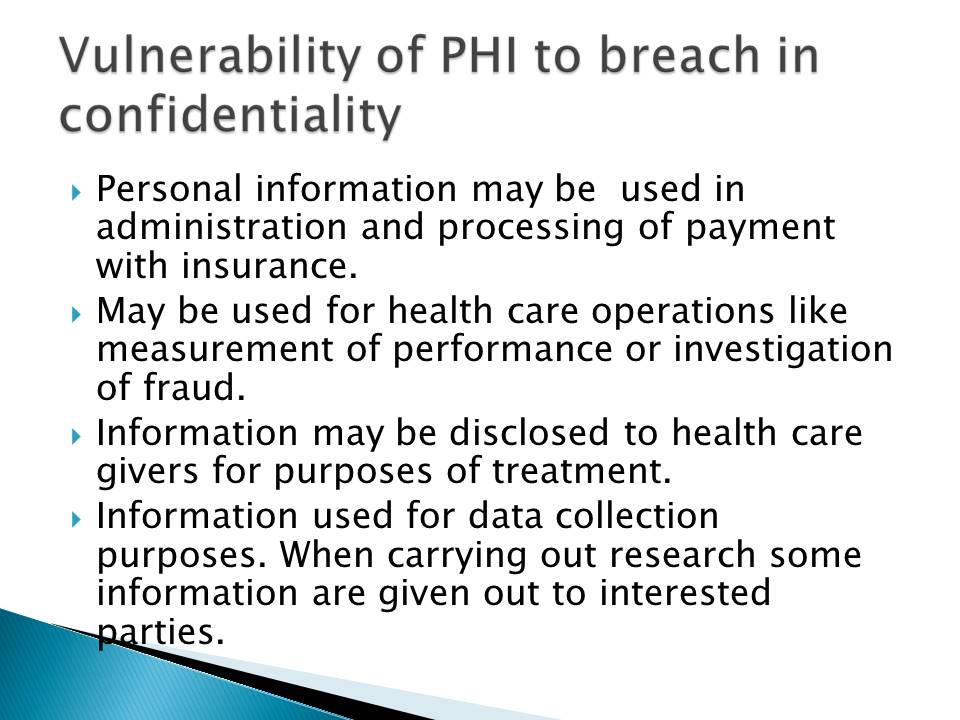
Types of security measures important to ensure that HIPAA regulations are met
Strengthening of the computer fraud and abuse Act to protect un authorized access to protected computers
Implementing the Electronic Communications Act which protects un authorized use or access to electronic communications.
Employees who have access to electronic health information should undergo a thorough vetting process and procedures set that should be complied with,
Establishment of a routine and timely audit to establish violations of the HIPAA that may arise. Policies are then formulated to ensure the violations are not repeated.
The hardware and software containing PHI should be well protected and access restricted to only well trained employees.
The information systems must control all information flowing on open networks. A system of encryption is encouraged.
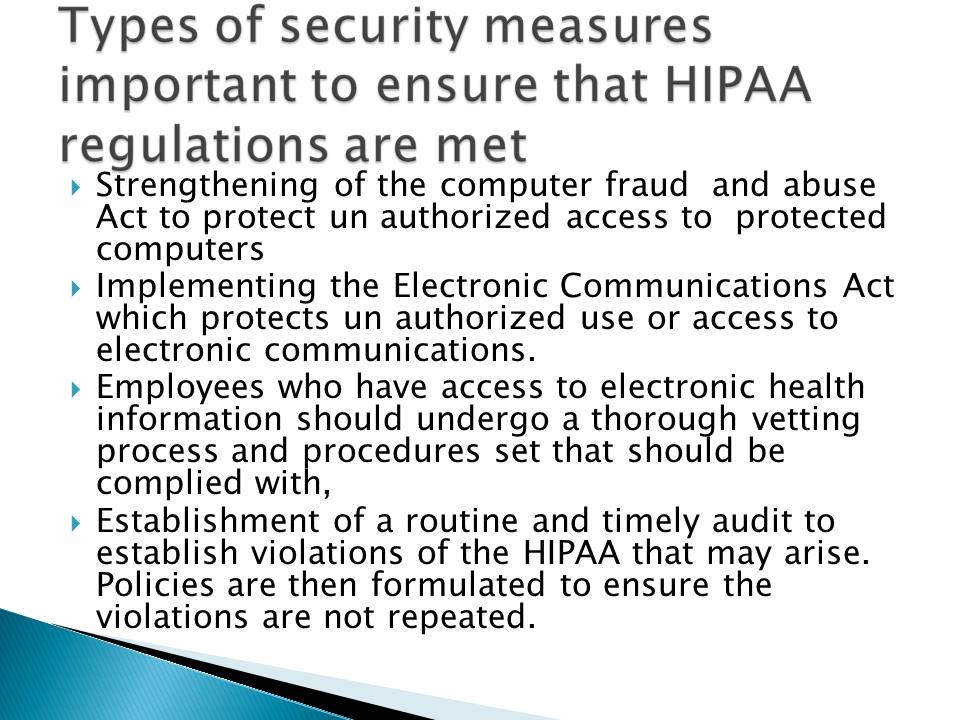
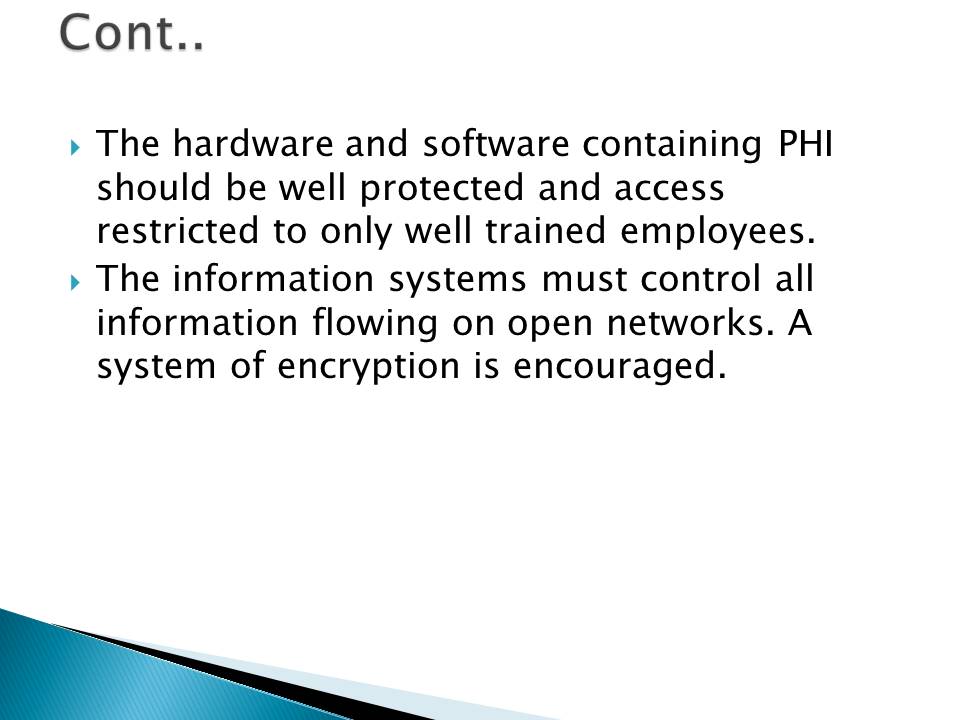
Identifying problems and errors in EMR using QI.
Lack of proper documentation, use of data that is not accurate and poor communication may result in errors and bad incidents (Kohn, 2008 p.1).
Lack of quality data leads to increased costs of health care, lack of efficiency in treatment and threat to a patient’s life.
To reduce errors in treatment, accurate data is provided through quality improvement.
QI guides in identifying whether case has merit during reimbursement or whether a certain medical process is necessary or not.
Quality information helps protect the legal issues of the patient, organization and the medical personnel.
Quality information ensures enough data is available for medical research purposes.


Roles of the implementation team
Conducting trainings to staff members on the usage of Electronic Medical Records.
Implementing the policies and procedures set out by the hospital administration in development of the EMR system.
Mobilizing the entire staff to adopt the new system so as to ensure compliance.
Ensuring proper mechanisms are put in place to control access to personal health information.
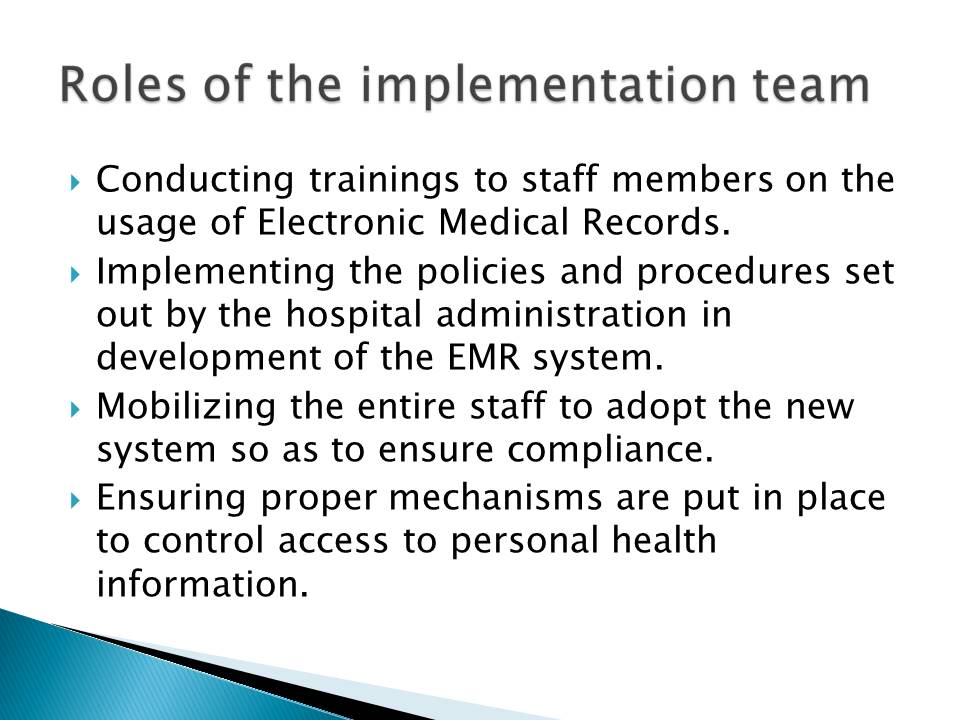
References
Kohn, Linda T., et al (2008). Institute of Medicine. To Err is Human: Building a Safer Health System. Web.
Carter, J. H (2001). Electronic Medical Records: A Guide for Clinicians and Administrators. Philadelphia: ACP Press.